A trip in the Boundary Waters Canoe Area Wilderness
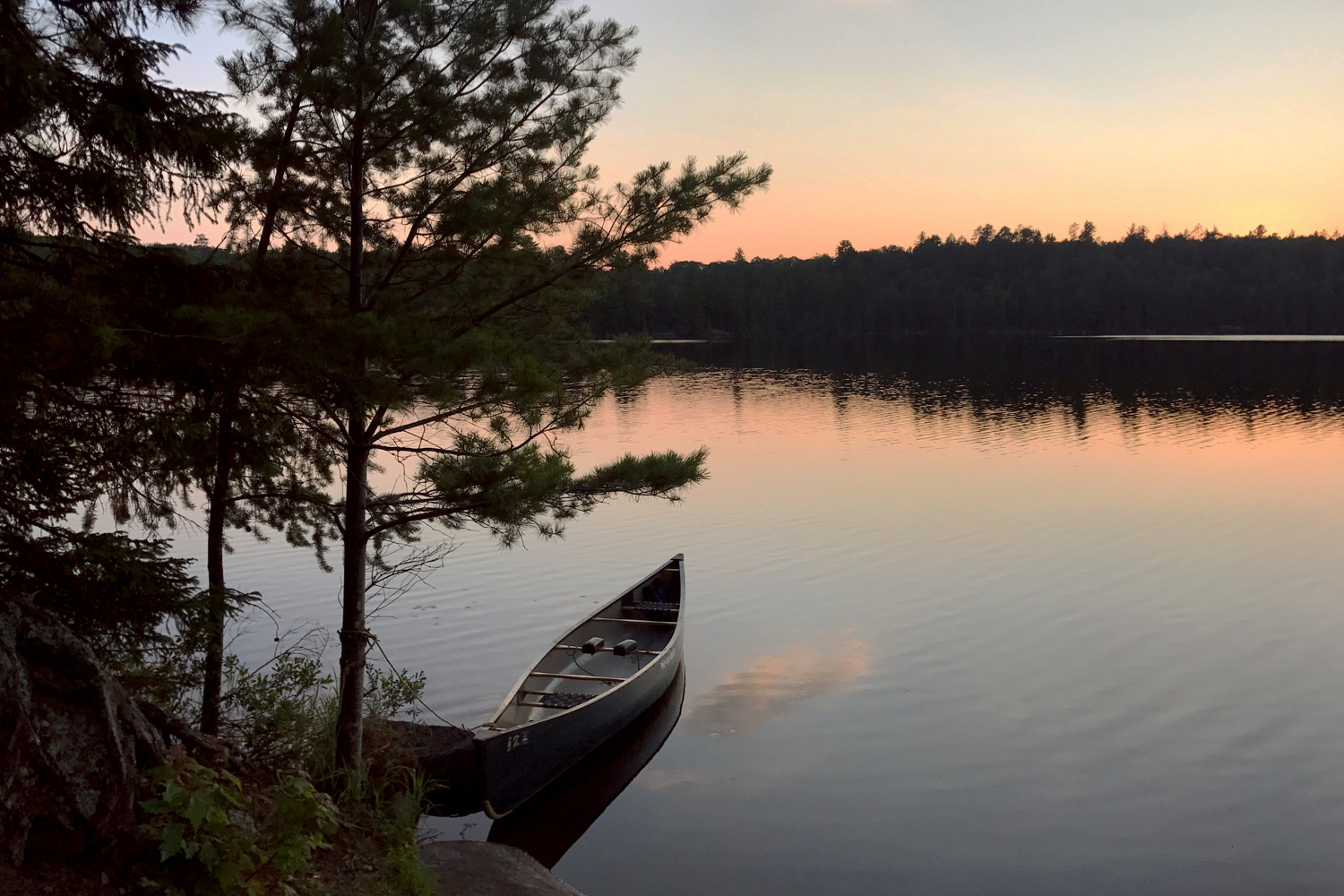
Portaging In: A Trip in the Boundary Waters Canoe Area Wilderness
Minnesota
Words by Molly Wick, photos by Molly and Jill Wick
The Boundary Waters Canoe Area Wilderness is over a million acres of wilderness located in northern Minnesota along the Canadian border. The area was first set aside in 1926 and then incorporated into the National Wilderness Preservation System in 1964. The area contains over 1,100 lakes and hundreds of miles of streams carved out of granite and basalt by glaciers 15,000 years ago.
A Heavy Load
A stream of sweat slides down the small of my back underneath my sports bra. The back of my tanktop is drenched under my forest green portage pack that stinks of someone else’s sweat.
It’s the first day of our trip. In fact, it is the first hour of our trip. My sister Jill has come from New Mexico for a moderately epic, not too dangerous, sisterly paddling trip in the Boundary Waters Canoe Area Wilderness in northern Minnesota. That is our style: cautiously and calculatedly adventurous.
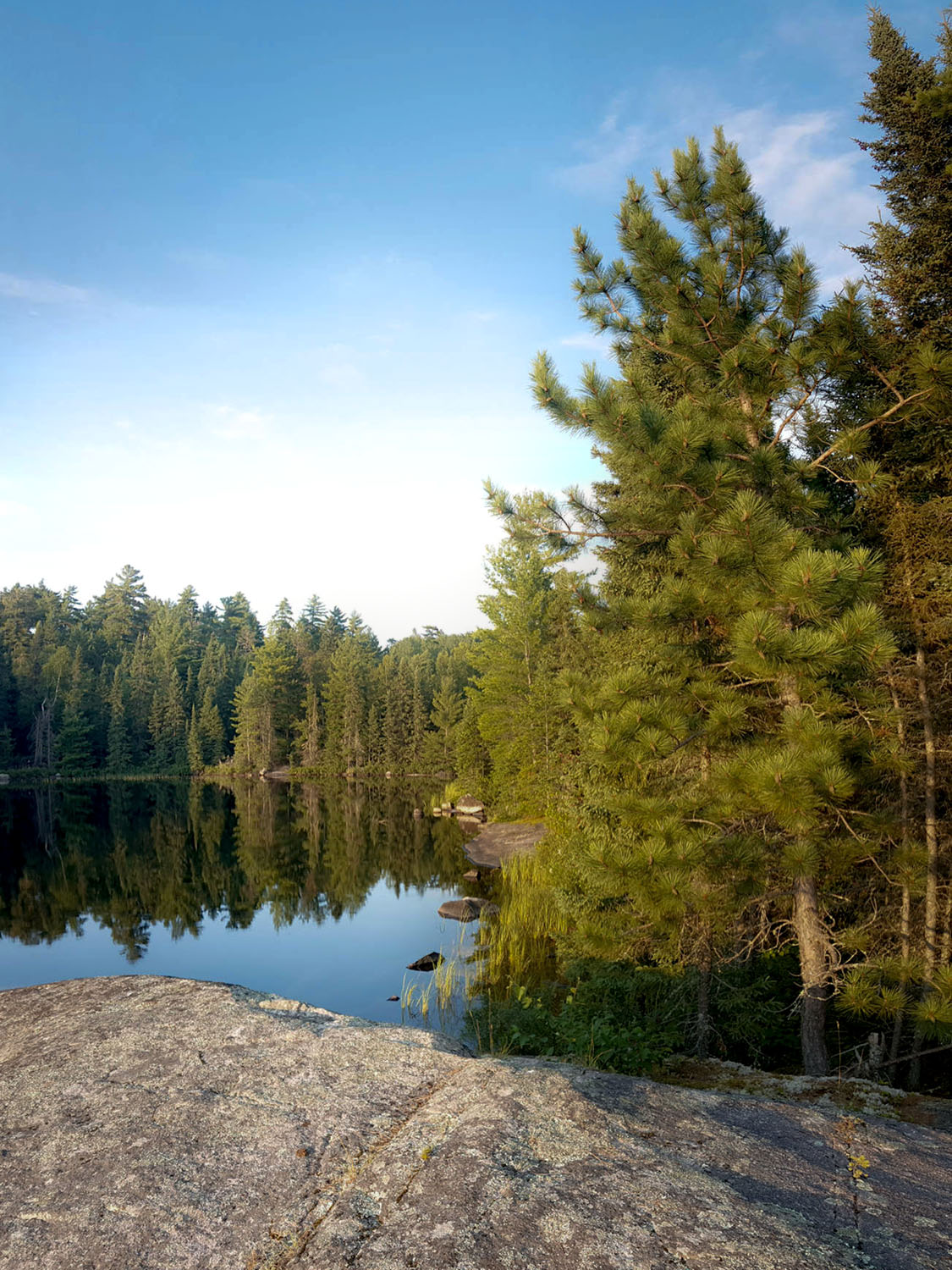 I’m distracted from the relentless pressure on my shoulders only by the cloud of mosquitoes landing on my arms and prodding at my flesh. I can’t move my hands from where they’re holding the gunnel of the canoe for fear of disrupting the delicate balance of the canoe on my shoulders. I blow furiously on my arm to get them to fly. They return seconds later.
I’m distracted from the relentless pressure on my shoulders only by the cloud of mosquitoes landing on my arms and prodding at my flesh. I can’t move my hands from where they’re holding the gunnel of the canoe for fear of disrupting the delicate balance of the canoe on my shoulders. I blow furiously on my arm to get them to fly. They return seconds later.
I’ve been carrying the canoe for about ten minutes. Now it’s Jill’s turn.
Being the local one with more experience paddling, I planned this thing. I decided to pick a route that involves a 640-rod portage before the canoe even gets a single sip of water. That’s two miles.
Now that I’m here, I’m definitely questioning my own judgement.
We knew that this first portage wouldn’t be fun; especially carrying the canoe, packs, paddles, and life jackets all in one trip. The portageur carries the lighter pack, but of both packs definitely qualify as heavy. This is a canoe trip after all, not ultra-light backpacking. We brought fresh veggies and wine!
It takes us 5 hours to cover 2 miles.
On the water
We finally load the canoe and glide off into to flat, blue water; stretching our legs out in front of us. Our paddles dabble in the water without urgency. The oppressive heat softens into warm sunshine contrasted by a breeze down the long, narrow bedrock lake lined with tall pines. As if on cue, a loon calls to its partner, its eerie voice echoing across the water.
The vivid blue sky reflects the dark blue water, or is it the other way around? A mink scuttles along the shoreline and dives into the lake. We breathe. This is what we came for.
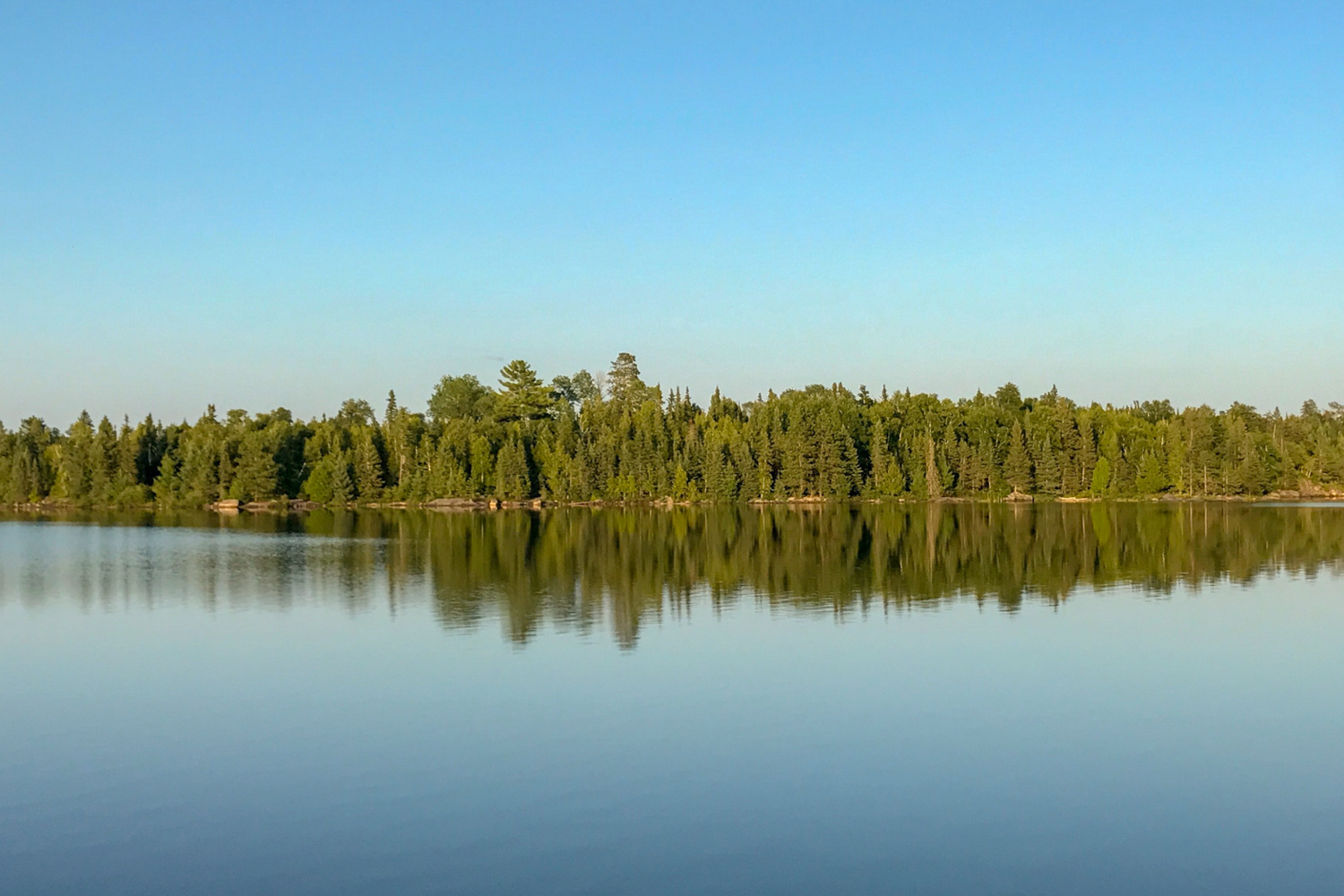
We breathe. This is what we came for.
We paddle onto the next lake and claim a campsite on the eastern shore – the best spot for sunset watching. The first priority is swimming. Sister swimming in deep, cool, clear northwoods lakes – both of us live for this. The cool water feels good on our dirty, tired bodies.
Afterwards we lay our towels on the warm bedrock shoreline and dry in the fading sun. I stretch my sore body while Jill pulls out the wine. We cook dinner and watch the sun dip lower. The mosquitos make their nightly appearance but we are too tired and content to care anymore.
A new route
I lay the map out between us and we evaluate our options.
To avoid doing the 2-mile portage again, there is one reasonable alternative. The route has a few short portages and some riverine connectors between lakes. It ends with several miles of walking to our car, and returning for our gear. It will be a little more paddling than we had planned, but anything to avoid doing that portage again.
The new route has a five-mile stretch on something called the Moosecamp River. Our topographic map sometimes shows healthy red portage lines around rivers, but for the Moosecamp River, it shows a skinny aqua line surrounded by little wetland icons. I’m hopeful those skinny aqua lines mean the river is “definitely and totally passable, don’t even worry about it” – but the map doesn’t have a legend.
We decide to go for it anyway.
Our risk is rewarded with a quiet, meandering river bordered by wetlands, which are flanked by tall white pines. The river is wide enough to paddle its bends gracefully but small enough that the wind can’t catch a breath. The river drops only four feet in five miles so the current at best is a gentle encouragement.
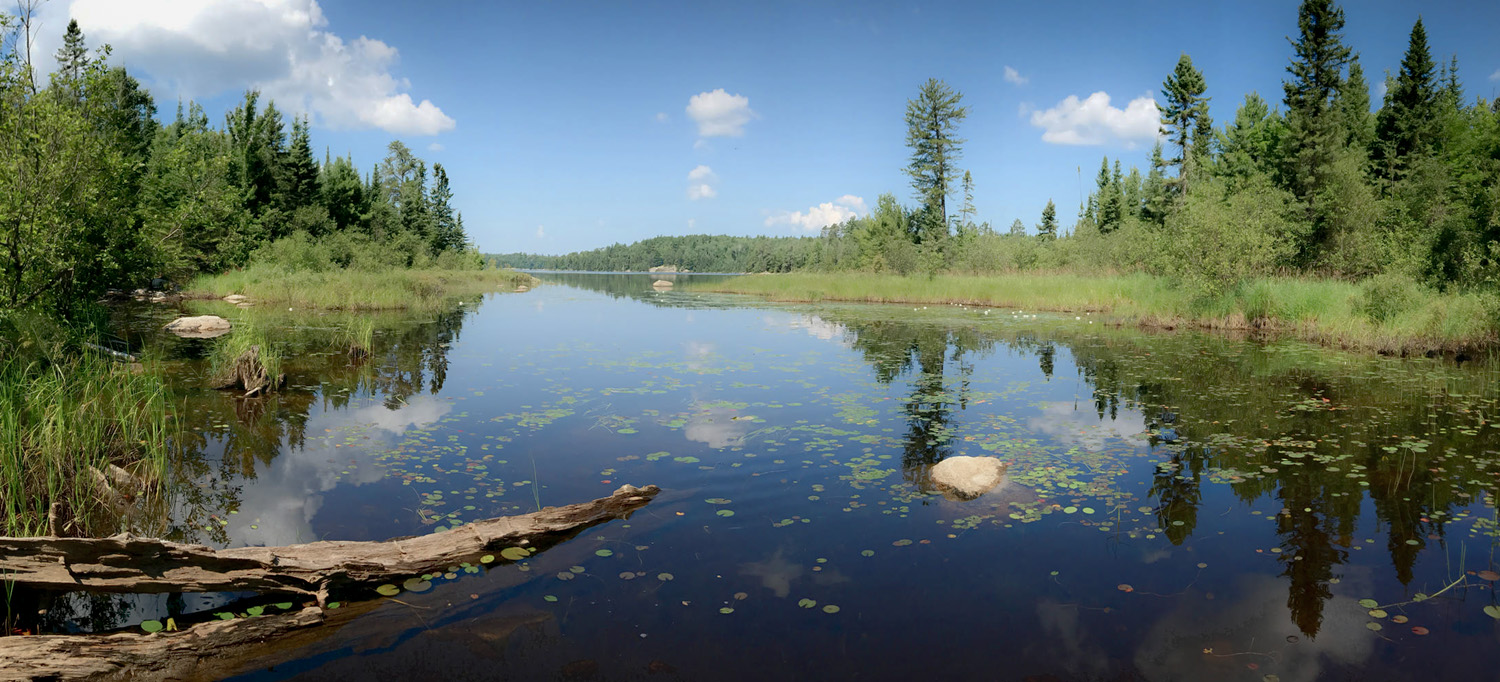
At each portage we donate blood to the mosquitos and sweat to the mud puddles in the steep, entrenched trails. Between portages is the good stuff. Jill and I alternate between discussing very serious things, very unserious things, and peaceful silence.
Compared to that first 640-rod portage, I assume every other portage will seem like a leisurely stroll in the woods. Instead, I face even the shortest ones with dread, and with reason. At each portage we donate blood to the mosquitos and sweat to the mud puddles in the steep, entrenched trails.
Between portages is the good stuff. Jill and I alternate between discussing very serious things, very unserious things, and peaceful silence. We listen to the meditative rhythm and gurgle of paddles moving through the water. After paddling for a half an hour each morning, my arms get sore. After another half hour, the soreness gives way to the ease of the repetitive motion.
Arlo the dog settles into watching the water, the shore, and the sky. A beaver, startled by our intrusion, slaps its tail at us before diving away. At night, we see the Milky Way reflected on the glass-clear water and fall asleep to coyotes yapping in the distance.

Uncertainty
On our last day we head towards Nels Lake, the last lake before our trek back to the car. According to the map, we paddle up a stream to the portage trail to Nels Lake.
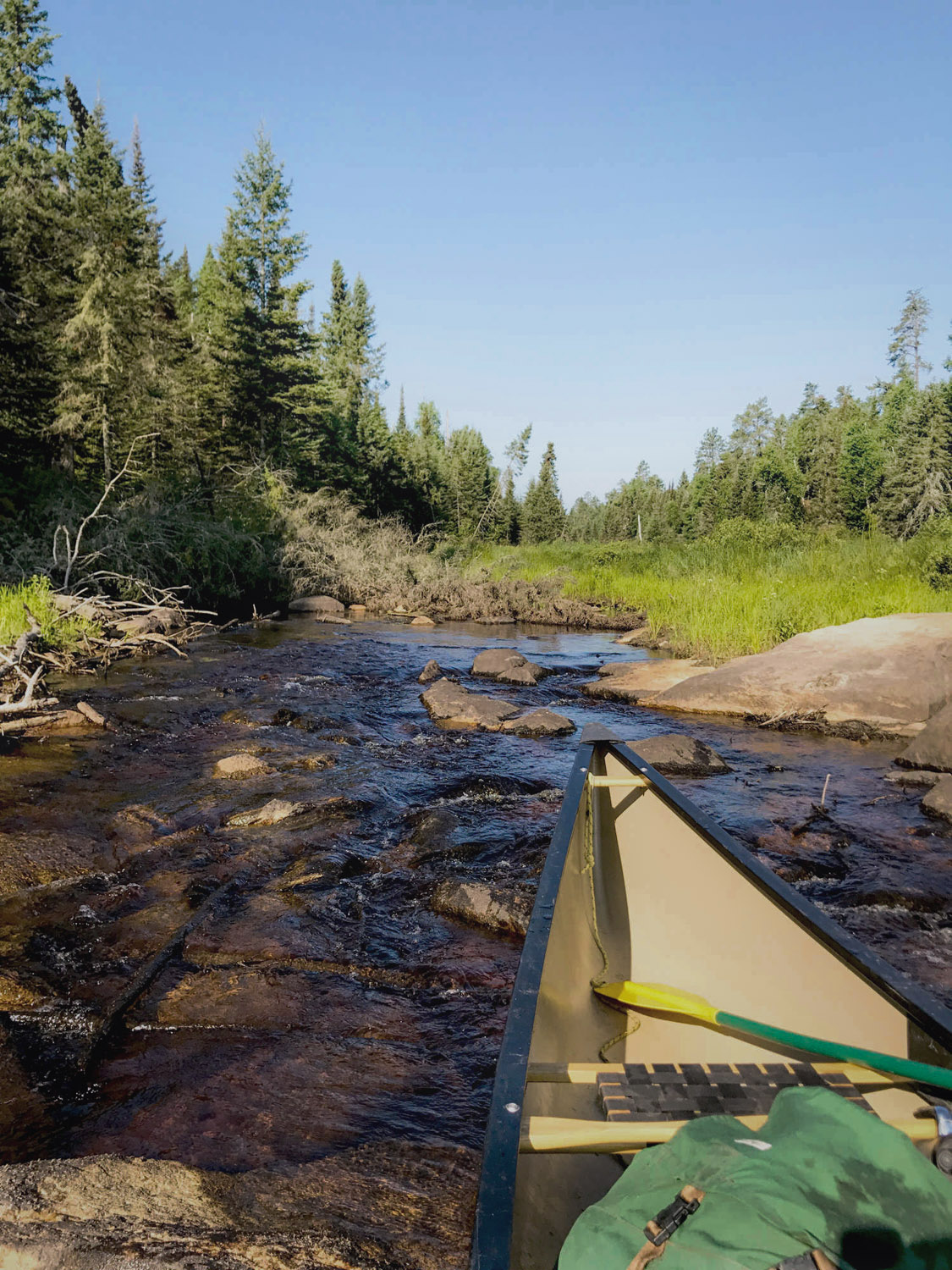 We search for the portage but see no signs of a trail. We consult the map, paddle, consult again. The stream gets shallower and rockier. I get out and bang the heavy canoe around rocks and boulders against the current; Jill pushes.
We search for the portage but see no signs of a trail. We consult the map, paddle, consult again. The stream gets shallower and rockier. I get out and bang the heavy canoe around rocks and boulders against the current; Jill pushes.
As it turned out, our trip was destined to be bookended by slow, draining hauls, on land and on water.
We come to a fork in the stream with still no sign of a portage trail. To the right are rapids – impassable. To the left is a channel bordered by tall grasses – narrow, but passable. We take the only option, continuing in thigh deep water, stumbling and falling while heaving the canoe over slippery submerged boulders.
As it turned out, our trip was destined to be bookended by slow, draining hauls, on land and on water.
Finally, the side channel reunites with the main stem of the cascading stream. We spot an area with matted grass along the creek – could this be the elusive portage? We haul the canoe up on the shore. After a little exploring, we find a length of pink flagging marking a tiny, overgrown trail that heads up along the cascading stream towards Nels Lake. This must be it.
The way out
Once we’re on Nels Lake we take our time, paddling quietly, not quite ready for the trip to be over.
By the time we start hiking back to the car, the heat of the day has accumulated in the gravel road, under our hats, in our sunburns. We watch a few car-loads of paddlers who have completed their journey head back towards town for ice cream and beer.
Just like all the trips my sister and I have taken, the challenges that we faced in the Boundary Wilderness become a part of us.
Eventually we make it to the car and then back to collect our gear. We are glad to be out, but not quite ready to return to civilization. Before loading up, we paddle back out to a campsite across the lake to eat one more peanut butter tortilla and take one last swim. We savor a moment between this world and the high-tech human one.
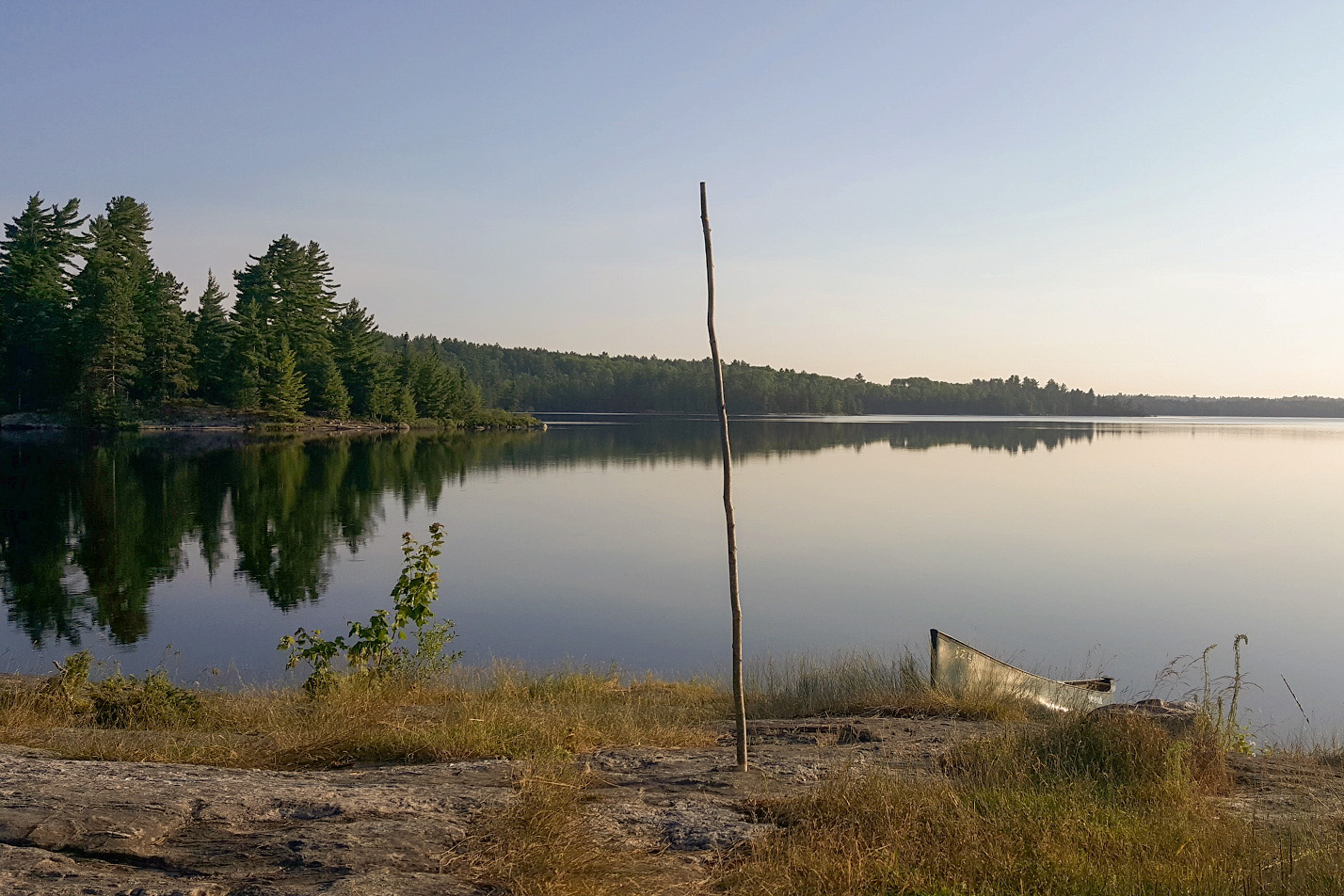
Just like all the trips my sister and I have taken, the challenges that we faced in the Boundary Wilderness become a part of us. It is by facing challenges in the wilderness that we build the courage and confidence to navigate the challenges of our daily lives.
And when we forget how miserable that portage was and return to the wilderness, I think we will crush it. Except next time we will definitely bring an ultra-light canoe.
Molly Wick is a water resource scientist, climber, writer, fiber artist, and sometimes paddler located in Duluth, Minnesota. Find her on Instagram and see more of her writing on Medium. Jill Wick is a fish biologist, knitter, photographer, and adventurer located in Santa Fe, New Mexico. See more from Jill on Instagram.
Amazing clicks of pictures! we have done with same place and its look like a heaven on the earth and we enjoyed our trip. Before visiting this place, we consult with Boundary Waters Catalog about the place and we bought some tools from them. We got some information from some blogs and our trip was amazing.